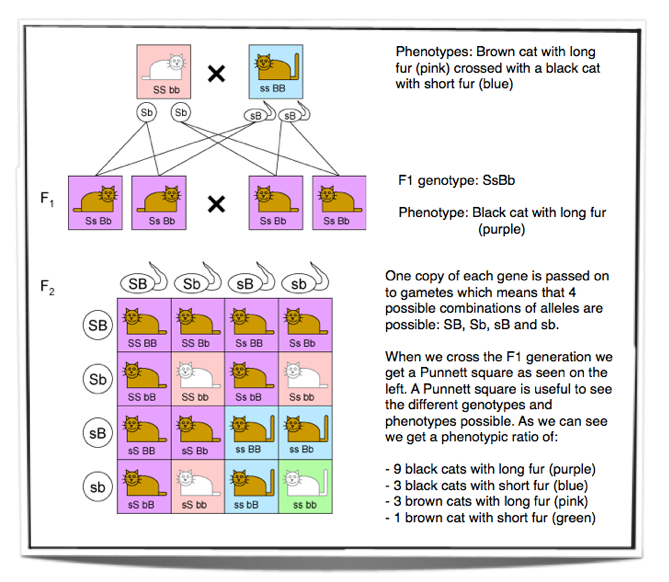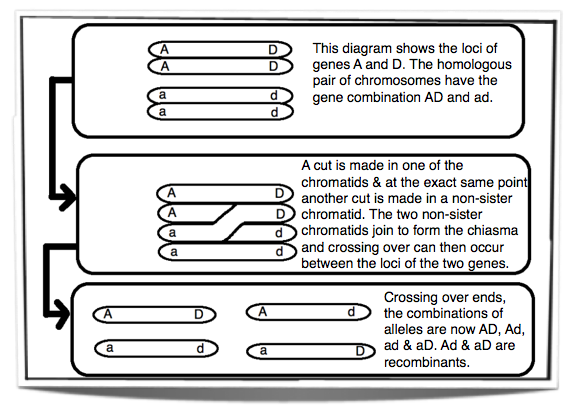Dihybrid crosses and gene linkage
10.2.1 Calculate and predict the genotypic and phenotypic ratio of offspring of dihybrid crosses involving unlinked autosomal genes.
A dihybrid cross is a cross between first generation offspring of two individuals which have two different characteristics. These two characteristics are controled by two genes.
We can use dihybrid crosses to calculate and predict the genotypic and phenotypic ratio of offspring involving unlinked autosomal genes. For example: Let's say we cross two cats with two different characteristics such as fur colour and fur length. For this example we will be using the alleles as follows:
- S = allele for long fur
- s = allele for short fur
- B = allele for black fur
- b = allele for brown fur

Figure 10.2.1 - Dihybrid cross
10.2.2 Distinguish between autosomes and sex chromosomes.
Sex chromosomes are the ones that determine your gender. These are X and Y (XX in females, XY in males).
Autosomal chromosomes are the remaining chromosomes which are not sex chromosomes. There are 22 pairs of these in humans. This means that there is a total of 23 pairs of chromosomes in humans (22 autosomal pairs + 1 sex chromosome pair = 23 pairs of chromosomes).
10.2.3 Explain how crossing over between non-sister chromatids of a homologous pair in prophase I can result in an exchange of alleles.

10.2.4 Define linkage group.
Linkage group: A pair or set of genes on a chromosome which tend to be inherited together.
